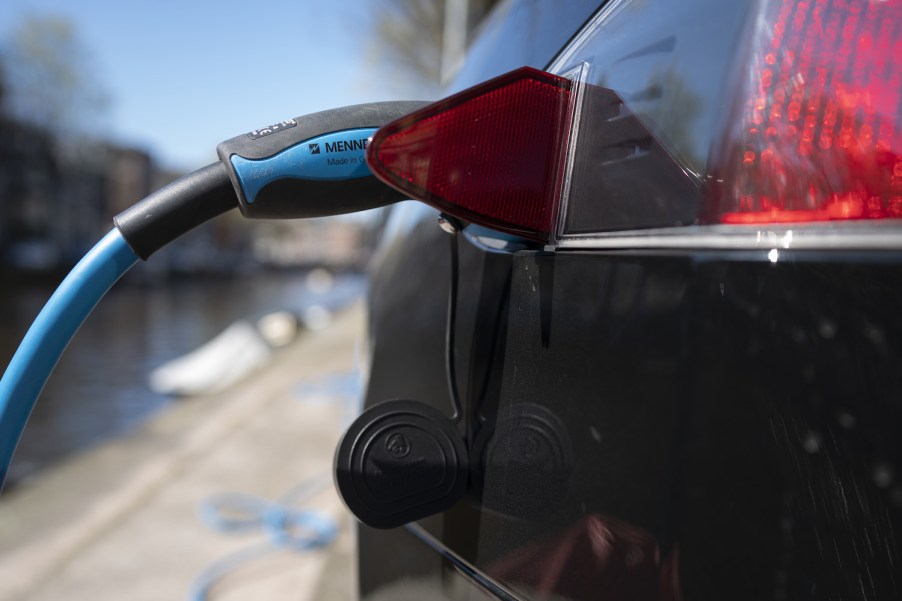
Can You Plug an Electric Car EV Charger Into Your Dryer Outlet?
If you daily drive an EV you know the importance of being able to charge your battery rapidly. A dryer outlet offers 240 volts of power and will charge an electric vehicle faster than a regular 120-volt appliance outlet. But you will probably need to buy a special charger or adaptor to plug in to your dryer outlet.
Can you plug your electric car into a regular wall outlet?
Most of the appliance outlets you’ll find in the walls of your house offer 120 volts of electricity. You can certainly plug an electric vehicle into one of these outlets. But depending on its battery size, your car may take 40 or even 50 hours to charge up completely.

The U.S. Department of Transportation classifies a 120-volt system as “Level 1” EV charging. Level 1 charging almost always refers to plugging your EV charger into a wall outlet, because all public chargers offer more than 120 volts. Why is this? Because a plug-in hybrid EV (PHEV) could take between five and six hours to charge completely with just 120 volts of power.
Full battery electric vehicles need much more power than PHEVs and have higher capacity batteries. That is why it might take two days to charge a BEV up from empty if you only have access to 120-volt power.
In a pinch, plugging in to a wall outlet isn’t a bad way to top off your plug-in. But it’s a less-than-ideal way to charge an EV up from empty.
Can you plug your electric car into a dryer outlet?
Many houses have a few 240-volt outlets. These are used for electric dryers, certain electric stoves, and even welders. This is why you may find 240-volt outlets in your laundry room, kitchen, and garage. These outlets may even vary in amperage. You can likely order an adaptor from your automaker to plug your electric car into any of these outlets.

Any 200+ volt charging system is classified as “Level 2.” This includes commercial 208-volt EV chargers as well as your 240-volt dryer outlet. Level 2 should be able to charge most EVs up from empty in between four and 10 hours. A PHEV should take one-two hours.
Should you charge your EV from your 240-volt home outlet?
Is it a good idea to plug your electric car into a dryer outlet? Not always. Dryers are not meant to be plugged and unplugged, so swapping from your car to this appliance repeatedly may cause some damage.

What’s more, the 240-volt outlet in your garage may be a 30, 40, or even 50 amps depending on its intended use. You’ll have to make certain your EV charger can handle its amperage.
According to Clean Technica, you may be able to get around the plugging/unplugging issue by plugging a heavy-duty splitter into your 240-volt outlet, so you can leave both your EV extension cord and dryer plugged in, but only operate one at a time.
Still, many EV owners prever to have a purpose-designed EV charger installed in your home. This will often charge your battery the fastest. An electrician can wire it into your house’s existing 240-volt system, and you won’t have to unplug your dryer every time you need to charge up your car.
If you often visit a friend who has a garage with a dryer outlet, it might be worth doing some research and purchasing the proper adaptor for your car. This could save you from being stuck with a 110-volt outlet and a frustratingly slow charge.



